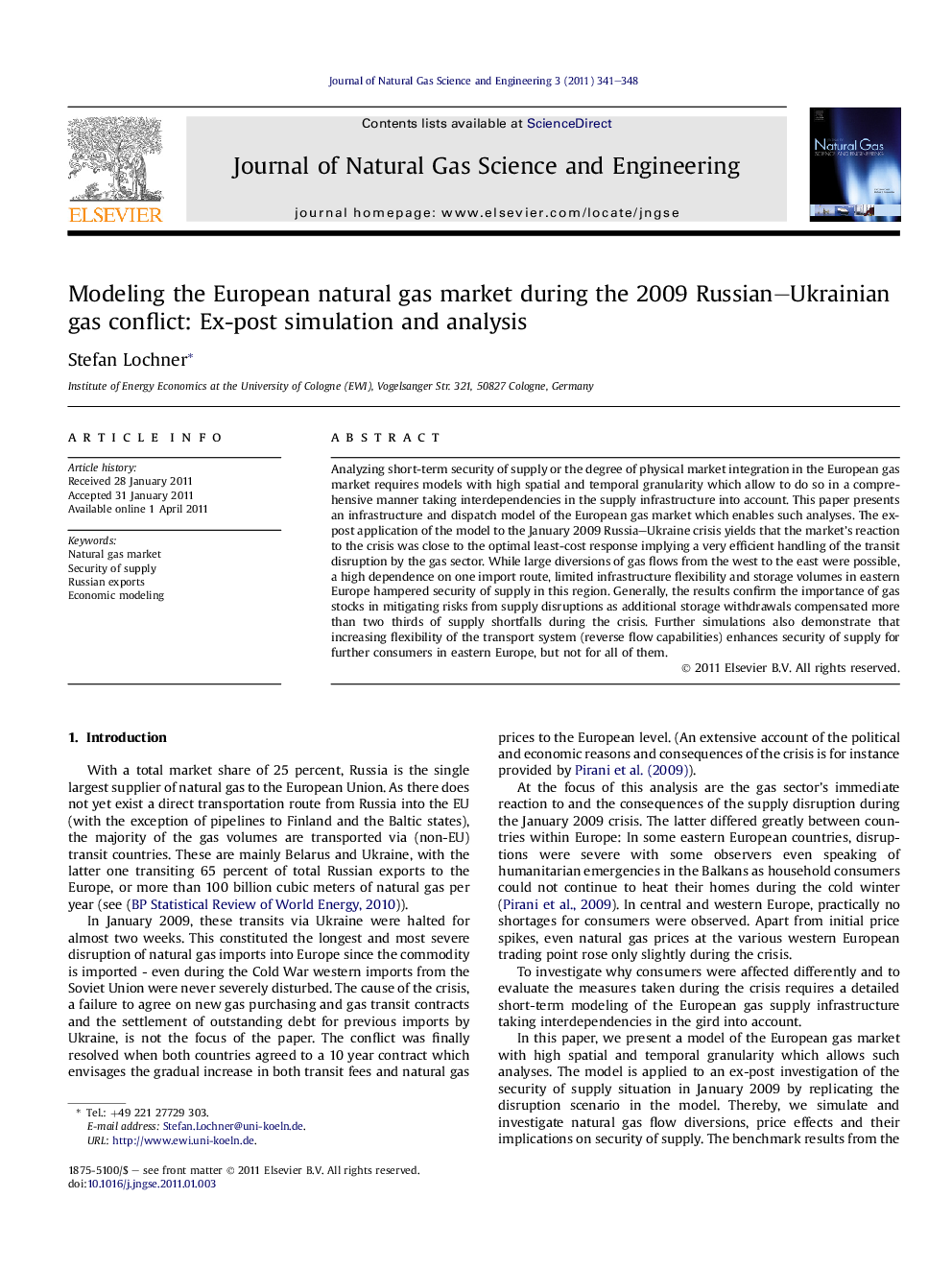| Article ID | Journal | Published Year | Pages | File Type |
|---|---|---|---|---|
| 1758356 | Journal of Natural Gas Science and Engineering | 2011 | 8 Pages |
Analyzing short-term security of supply or the degree of physical market integration in the European gas market requires models with high spatial and temporal granularity which allow to do so in a comprehensive manner taking interdependencies in the supply infrastructure into account. This paper presents an infrastructure and dispatch model of the European gas market which enables such analyses. The ex-post application of the model to the January 2009 Russia–Ukraine crisis yields that the market’s reaction to the crisis was close to the optimal least-cost response implying a very efficient handling of the transit disruption by the gas sector. While large diversions of gas flows from the west to the east were possible, a high dependence on one import route, limited infrastructure flexibility and storage volumes in eastern Europe hampered security of supply in this region. Generally, the results confirm the importance of gas stocks in mitigating risks from supply disruptions as additional storage withdrawals compensated more than two thirds of supply shortfalls during the crisis. Further simulations also demonstrate that increasing flexibility of the transport system (reverse flow capabilities) enhances security of supply for further consumers in eastern Europe, but not for all of them.
Graphical abstractFigure optionsDownload full-size imageDownload high-quality image (312 K)Download as PowerPoint slideHighlights► Modeling gas supply infrastructure with high spatial and temporal granularity. ► Pipeline supply disruption simulation of historic event. ► Analysis yields market response close to optimal reaction. ► Infrastructure bottlenecks prevent further crisis mitigation
